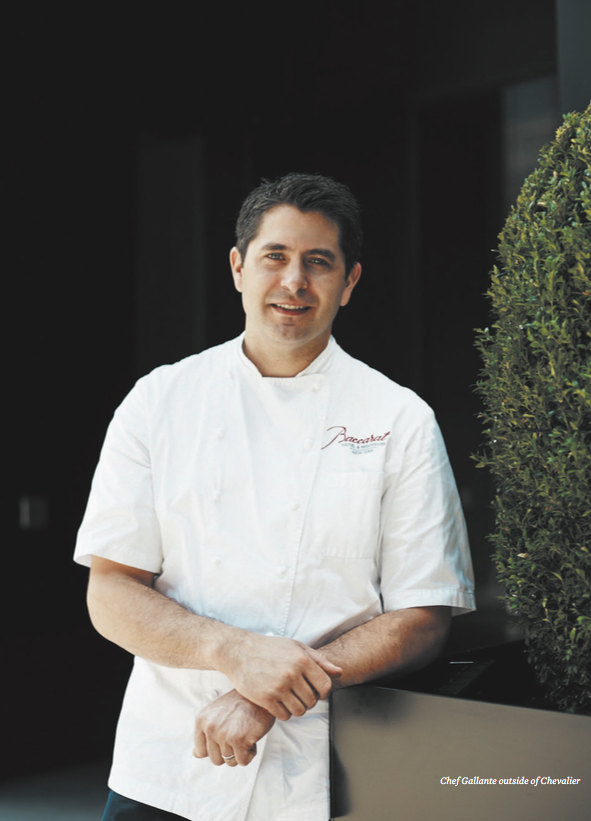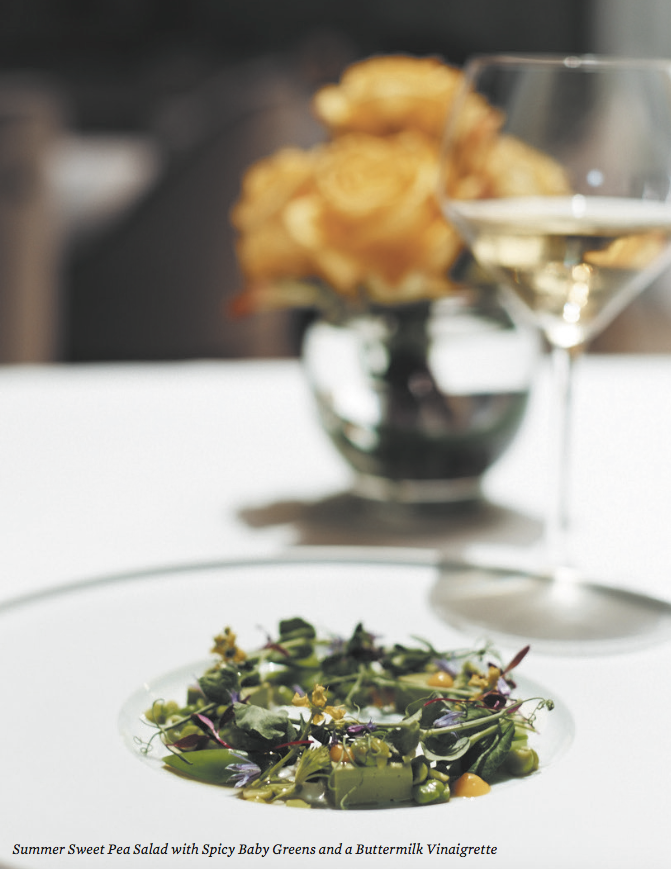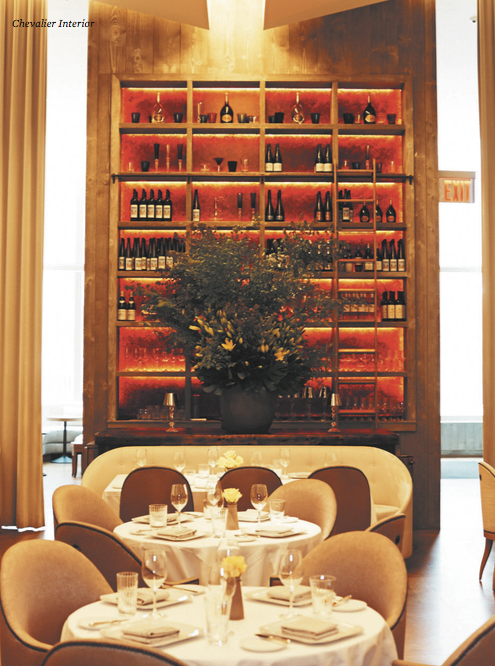Chef Shea Gallante to Make The Baccarat’s Chevalier Soar
 Michellin-Star Executive Chef Shea Gallante—is driven by food. His journey is rooted in humble beginnings, starting at a pizza parlor in upstate New York and going on to the Culinary Institute of America, where he refined his skills. After gigs at some of the finest eateries in Manhattan, he opened his own restaurant called Cru, where he received a Michelin star. His food resume reads a mile long with restaurants where he was employed, externed, trailed or outright owned—all in search of the level of an elevated level of food. Haute Living sits down with the passionate chef to talk about the newly-christened Chevalier. Part of the recently-opened Baccarat Hotel, the brasserie de luxe is set to become a New York classic.
Michellin-Star Executive Chef Shea Gallante—is driven by food. His journey is rooted in humble beginnings, starting at a pizza parlor in upstate New York and going on to the Culinary Institute of America, where he refined his skills. After gigs at some of the finest eateries in Manhattan, he opened his own restaurant called Cru, where he received a Michelin star. His food resume reads a mile long with restaurants where he was employed, externed, trailed or outright owned—all in search of the level of an elevated level of food. Haute Living sits down with the passionate chef to talk about the newly-christened Chevalier. Part of the recently-opened Baccarat Hotel, the brasserie de luxe is set to become a New York classic.
What drove you to pursue a culinary career?
I grew up in Duchess County, with the Culinary Institute of America nearby—a friend told me about the courses there and one day, a switch flipped [in my brain] and I walked in and filled out an application. My grandparents had a huge vegetable garden the size of [Chevalier] and grew everything. Even though as kids we didn’t like sophisticated food, we grew up on a very good diet because of my grandparents’ garden. Going to the CIA was eye-opening for me; it’s where my passion for food began.
After I graduated from CIA I came straight to Manhattan and worked for a restaurateur named Pin0 Luongo, who had a bunch of Italian eateries in New York. It wasn’t the most elevated cuisine, but it was good food, decent volume and great exposure for me. After working for his small empire, I yearned for more. Since I am of Italian decent I was naturally drawn to Italian cuisine, and when I heard Lidia Bastianich was hosting interviews for a Kansas City restaurant, I made an appointment. I told her my goals and ambitions even though I didn’t want to move to Kansas City. She gave my resume to the chef at her New York restaurant Felidia who called me the next week. I “trailed” him (work with a chef for one service to see if it’s a fit) and although they didn’t have a position open, they eventually created one for me. I ended up staying for three and a half years. It was my first heightened culinary experience.
Besides CIA, where did you hone your French culinary skills?
I sent my resume to a chef at Bouley restaurant and the chef at Danube took it off the fax machine and called me. I “trailed” the chef there, and when I met David Bouley for the first time, he asked me to come work for his other restaurant called Bouley, which [served] classic French cuisine. From the second service started I said, “Yeah—this is the place for me.” I was a line chef and within six months got promoted to sous chef. I was there for almost a year when 9/11 happened. We had such close proximity to the disaster area—it changed everything. David got involved with the Red Cross and we churned out meals for them exclusively—we did a couple million meals in a matter of 18 weeks. Since the chef du cuisine left, it was up to me to do it all. I saw it as an opportunity.
 A chef du cuisine is much more involved with the restaurant than just the menu and cooking. Where did you learn all you needed to achieve the title of ‘Chef’ at Chevalier?
A chef du cuisine is much more involved with the restaurant than just the menu and cooking. Where did you learn all you needed to achieve the title of ‘Chef’ at Chevalier?
I decided to open my own restaurant called Cru on Fifth Avenue and 9th Street in 2004. It was my first time being on my own. I realized that through all the years I had worked for other chefs, [I had really just been] recreating their products. It’s kind of like an invisible shield around you—you are protected. With Cru I had to deal with all kinds of criticisms for almost six years. In 2009 I parted ways with the owner and a few months after my departure, the restaurant closed.
When did you start the process of opening Chevalier?
About a year ago I started in earnest—ordering the glassware, vases, linens, tabletop, flatware. I had to redesign the kitchen—it took a good portion of time to get it in the elegant shape it is in now.
Can you tell me about the restaurant’s menu?
We officially opened in mid-April of 2015, so the menu is still evolving and for now it is limited. We’d rather have fewer dishes that are done expertly than more that are mediocrely. The flavor profiles are modern French but we accommodate a lot of individual requests from guests. Often we cook 30 different requests on a given night. Part of our concept as we evolve is to handcraft the experience for our guests.
 What is your favorite thing to cook?
What is your favorite thing to cook?
I love cooking as opposed to the administrative stuff. My favorite thing to cook because of its versatility is pasta. Simple black truffle pasta—on our menu now, is made with Australian black truffles—they are kind of new to the market. They rival in quality the traditional black winter truffles from France. It’s a real treat! I don’t eat a lot of pasta because I would be 500 pounds if I did, but I love to cook it!
What is your favorite tool in the kitchen?
Just a spoon—I use my plating spoons for everything. They become a knife, hammer or fork, or whatever you need it to be.
Photographs Weston Wells












